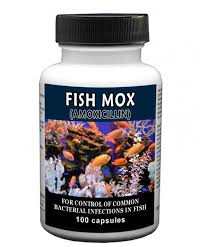|
|
DelMarVa Survival Trainings
Daily Features |
|
|
March 21, 2020
Fish Medications for Your First
Aid Kit
By Joseph Parish
With the
increased occurrence of the virus it
is important that we consider
alternative remedies when we are
ill. Every prepper and survivalist
has a first aid kit in their
automobile or in their RV in
anticipation of emergencies which
may be encounter when traveling,
however, one should also have such a
kit in their home. Accidents can and
do happen at any time and anywhere.
In addition to
the kits contained in the car we
maintain one in the RV as well as an
elaborate one in our home. Our
emergency first aid kit is
adequately combined with an
emergency supply of pills. All of
these items are safely contained
within an older, antique style china
cabinet located in our Food Room
where we can readily get to them. An
emergency first aid kit should never
be stored within a bathroom as such
a room has a tremendous amount of
humidity present. This moisture
would put your supplies at risk
especially your pills and tablets.
Within the
cabinet can be discovered the usual
first aid components which one would
uncover in any other first aid kit.
On the cabinet shelves you can
easily locate an assortment of
dressings and bandages, perhaps some
medical tape, a mixture of
antiseptic wipes, compresses, a few
pairs of latex gloves, tools such as
tweezers and scissors, along with
several digital thermometers.
Enclosed are also many over the
counter pain relievers and a good
selection of ointments and creams to
compliment the list.
These typical
supplies are fine for your general
emergency uses; however, the main
delight of our home first aid kit is
composed of our medical tablets and
dosages which we keep securely in
the cabinet. As mentioned, there is
a large amount of the usual over the
counter tablets and capsules along
with a generous supply of fish
medications which provides us with
the reason for this article.

There may be
some controversy taking place on the
internet as to the use of fish
antibiotics by survivalists and
preppers, but they do in fact work
and I have stockpiled a sufficient
quantity for emergency use only.
Most of the fish antibiotics are in
the same format as you would acquire
for human use with prescriptions
supplied by your family physician.
These pills are not in powder or
pellet form as you would customarily
expect for fish. They are in fact
your usual prescription pills and
tablets.
Your first
response may well be, "how are the
fish expected to swallow a tablet or
pill." This immediately causes
concern and makes us suspect that
the antibiotics before us may not
have been intended for our finned
friends at all. The key to these
amazing antibiotics is the lack of a
required prescription to purchase
them. The manufactures are well
aware that preppers and survivalists
are seeking a nonprescription
substitutes for the same drugs
provided by their doctor. This
allows them to use the same products
as found in prescription form for
"Fish" use.
Animal
antibiotics are usually formulated
differently according to the makeup
of the selected animal that it is
for. A cow's antibiotic is certainly
different than that for a human, in
that the cow has four stomachs. In
some cases, they are the same pills
and tablets as used for humans. Take
the case of fish antibiotics, when
you open a container of fish
antibiotics there are small letters
and numbers on them which not
surprisingly correspond to the same
human capsules. These are known as
Imprint Codes.
The FDA
requires all human prescriptions to
be imprinted with a unique code to
identify the medications. An Imprint
Code will identify the drug type and
its strength. You should never take
a pill which lacks an imprint code,
as it could be hazardous to your
health. One survival doctor has
openly stated that these fish
medications are the same as we would
purchase for our own use. The fish
medicine companies source the pills
from the same manufacturer who
creates them for humans and merely
repackages them for the fish.
The biggest
difference which I see in the
tablets and pills is the quality of
care taken when they are fabricated,
but if these are reserved strictly
for SHTF emergencies they would work
fine. Please be advised that anytime
you purchase, and use fish
antibiotics you are assuming a
measure of risk since the animal
meds are not held to the exacting
standards as those for humans.
Some of the
more common fish antibiotics are
Fish Pen Forte which is in fact
Penicillin and Fish Mox which is the
popular Amoxicillin. Others include
Fish Flex Forte (Cephalexin), Fish
Zole (Metronidazole), Fish Cin (Clindamycin),
Fish Cillin (Ampicillin) and Fin
Flox (Ciprofloxacin). Each contained
in the exact same dosage as for a
human. Why would a small fish need
500 mg of Penicillin, the same as a
human would take?
As you can see
it is entirely possible to be
equipped for any sort of emergency
which you may encounter but let me
state here and now for the record
that these medications do not take
the place of those prescribed by
your doctor, nor am I in no way
advising you to use them. I am
merely relating to you my personal
experiences. This is not medical
advice and as in anything else you
should do your homework.
Standard
Disclaimer: This information is
provided for educational purposes
only and you should use it at your
own risk. It is not endorsed by the
author and you are advised to
consult with a qualified medical
professional. | 